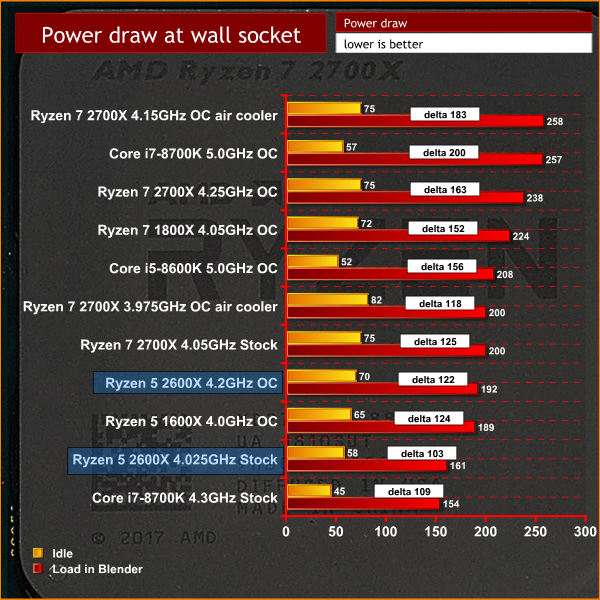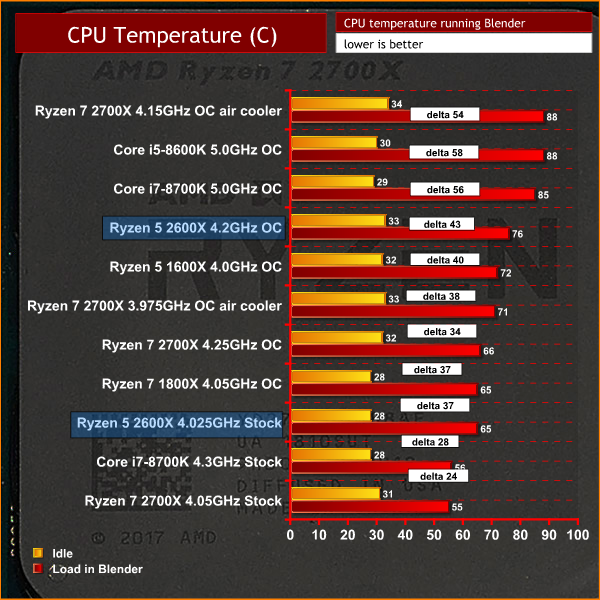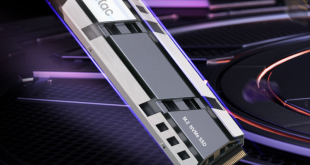Overclocking Overview
Manually overclocking the Ryzen 5 2600X to 4.2GHz with 1.4V Vcore was straightforward, however the results showed very little advantage over default clock speeds. In pure CPU tests such as Cinebench and Blender the increased clock speeds helped to a small extent while in gaming tests the benefit was negligible.
Our conclusion is simple and we recommend that you leave Ryzen 5 2600X at default speed and rely entirely on Precision boost 2 to do your overclocking.
Power and Heat


Power and Heat Overview
The Spire cooler looks fairly basic, however it has a copper core and delivers decent performance. In the video I said something like ‘As the workload increases the fan speed also increases’ which may sound like an obvious statement however my point was that the fan speed responds directly to the cooling load and as a result the noise can get intrusive.
To maintain a level playing field we tested Ryzen 5 2600X using the Fractal Design Celsius S24 240mm All In One.
Ryzen 5 2600X runs cooler than the 4GHz Ryzen 5 1600X, just as we would expect, and is an impressive package at stock clock speeds. It is interesting to note the overclocked Ryzen 5 2600X sits at 77 degrees when using the Fractal Design Celsius S24 cooler, which is exactly the same temperature as the overclocked Ryzen 7 2700X.
Ryzen 5 2600X has a reasonable level of power draw at idle, although there is room for improvement. At 4.025GHz the test system draws 161W at the wall socket which looks good compared to the 189W required to overclock the Ryzen 5 1600X to a manual 4.0GHz. We were unimpressed by the small amount of extra performance that was delivered by overclocking so those 28W were effectively being wasted.
 KitGuru KitGuru.net – Tech News | Hardware News | Hardware Reviews | IOS | Mobile | Gaming | Graphics Cards
KitGuru KitGuru.net – Tech News | Hardware News | Hardware Reviews | IOS | Mobile | Gaming | Graphics Cards


